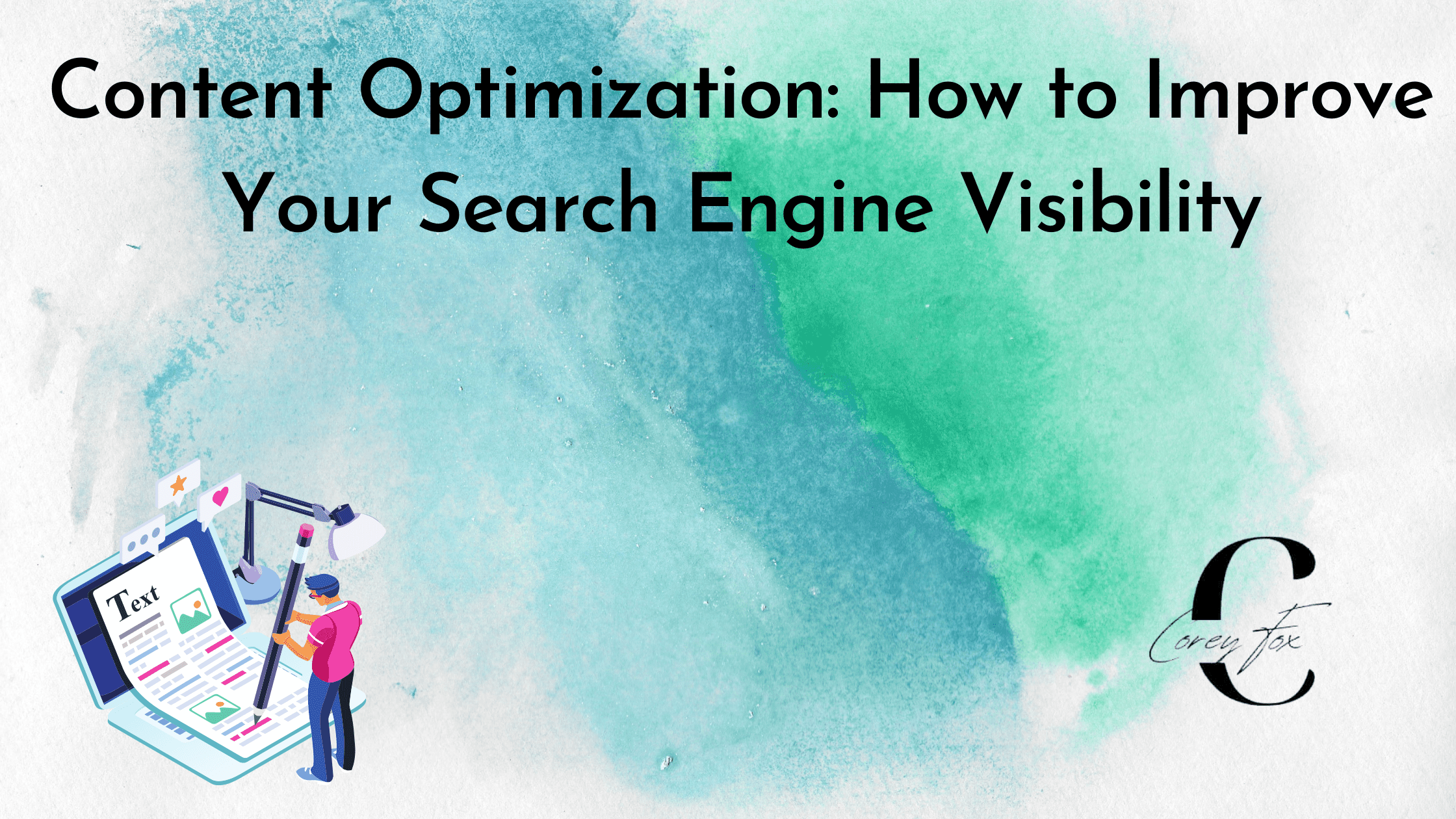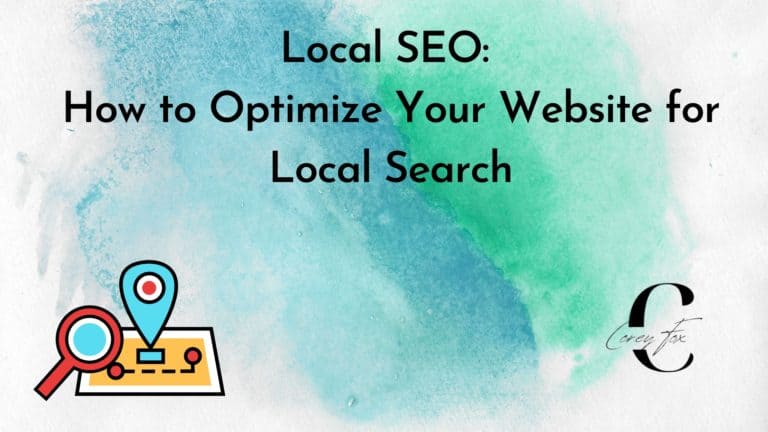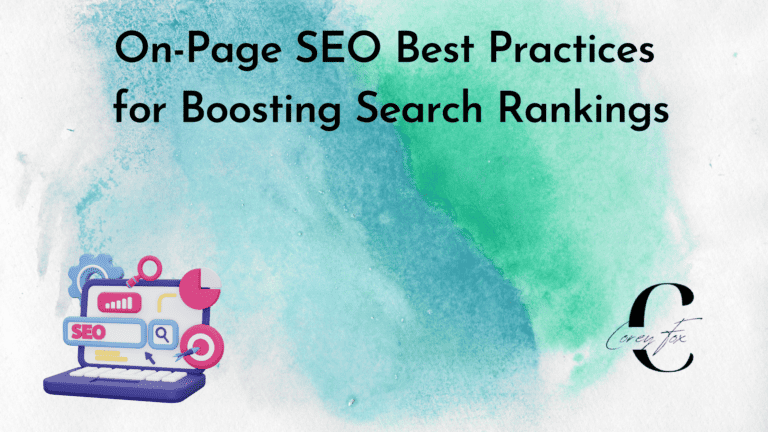Content Optimization: How to Improve Your Search Engine Visibility
Last Updated on October 3, 2023 by Corey Fox
Are you searching for ways to make your website more visible in search engine results? If so, content optimization is an essential tool for increasing your digital presence and thereby driving higher organic traffic.
Content optimization is all about taking the quality of your content to a whole new level, and making it easier for both search engines and users alike to locate what they need fast.
Are you looking to improve your website’s online visibility and get higher search engine rankings? Look no further. This comprehensive blog post will guide both newbies and experienced webmasters on how to maximize the reach of their content.
You’re sure to find something of value here.
By following these simple tips and tricks, you can give yourself the best chance possible at being seen online.
What Is Content Optimization?
Content optimization is the practice of refining online material so it’s more accessible, clear, and cherished by search engines.
By embracing tried-and-true procedures like keyword research, fast page speed, and imaginative copywriting you can drastically raise your presence in SERPs (search engine results pages) which will result in greater organic visits to your website or blog.
As well as optimizing images and videos plus taking advantage of internal and external links are essential components to guarantee optimal engagement with prospective customers.
How Content Optimization Works
Content optimization is designed to hone your content’s relevancy toward the queries users are inputting into search engines.
By improving your material, you can help algorithmic formulas efficiently rank and rate it in the eyes of Google or Bing.
Beyond that, creating optimized, high-quality content helps you target customers accurately and establish trustworthiness within a specific niche.
How to Optimize Your Content for SEO
To boost your content’s visibility and ranking on SERPs, following these best practices is essential.
Here are the key steps you should take:
11 Steps to Building a Content Optimization Strategy
1. Perform In-Depth Research for Relevant Keywords
Performing in-depth research for relevant keywords is essential to SEO content optimization.
To get started, you’ll need to determine your target audience and their needs. Knowing what users are looking for is key to identifying the most appropriate keywords.
You should then use keyword research tools like Google’s Keyword Planner or SEMrush to generate a list of relevant search terms and phrases based on search volume, competition level, etc.
You can use this tool to find semantically related keywords that you should also use in your content.
Also, you should also include long-tail keywords or natural language queries that tend to be more conversational and typically used by searchers with strong purchase intent.
Once you have a preliminary list of relevant keywords, it’s important to analyze them further for relevancy & accuracy. You can look into related topics & questions people might ask when looking for your product/service and incorporate them into your content as well.
Finally, it’s also important to keep track of SEO trends and update your keyword list regularly as needed.
2. Create Topic Clusters
Topic clustering is an SEO strategy used to group related content together and helps search engines better understand the relationships between various web pages.
To create a topic cluster, start by identifying the core topics related to your website & products/services.
Then, develop several long-form pieces of content that are focused on each case.
Once you have these pieces of content, link them together by adding internal links. This helps build pathways for users to explore related topics and also reminds search engines that all these pages are part of the same website or subject area.
Finally, it’s important to maintain the structure by creating a table of contents page with links that leads to each topic page.
You can also list other related resources and cross-link between them as well.
Adding dedicated landing pages for each service/product can be a great way to strengthen the overall relevance of your site and make it easier for search engines to navigate through your content.
3. Include Target Keywords throughout the Content
Once you have a list of relevant keywords, it’s essential to include them throughout your content in order to optimize for SEO.
You should start by including the main target keyword in the page title, description, and headings.
It’s also important to use variations of the target keyword while still keeping natural-sounding sentences that make sense to users.
Additionally, you should incorporate relevant synonyms and internal links as well. In addition to this, you should also optimize for user experience by making sure web pages are easy to read and navigate.
Finally, make sure all keywords are placed strategically so that they don’t look out of place or appear too often within the same piece of content.
4. Optimize Page Title Tags, URLs, and Headlines
Optimizing the page title tags, URLs and headlines are three essential steps when it comes to SEO.
For the page titles, try to include your main target keyword at the beginning if possible, and make sure the length is no more than 60 characters long. It’s also important to make sure it’s catchy and easy for users to remember.
Then, for your URLs, keep them short and descriptive of their content, and make sure to include one or two of your target keywords.
Lastly, it would help if you focused on creating compelling headlines that stand out from your competition by including keywords and crafting click-worthy titles that also reflect the content accurately.
5. Optimize Page Meta Descriptions for Conversions
An optimized meta description is an essential tool for driving more traffic and conversions.
You should start by including your main target keyword if possible while keeping the length within 155 characters so that it doesn’t get trimmed in the search engine results page (SERP).
Also, try to include a call-to-action, such as “Learn more” or “Sign up now”, at the end of the description in order to encourage people to take action. Finally, keep the content natural and engaging by conveying the value of what readers will find on the page.
6. Optimize the Content Body
Optimizing the content body is important for maximizing your SEO, as well as providing a great user experience.
Start by including your main target keyword in the first 100 words of the post or page – this helps search engines determine what your optimized content is about and gives you a better chance of ranking.
Make sure to include related terms throughout the body – this helps to strengthen your content’s relevancy and demonstrates that you know what you’re talking about.
Also, ensure that the content is easy to read with shorter paragraphs, proper headings, and lists when appropriate.
Finally, remember to link out to other relevant articles within your own website and around the web in order to establish yourself as an expert on the topic.
7. Ensure Correct Spelling and Grammar
To ensure correct spelling and grammar when writing content, you should always proofread your work.
Also, take advantage of automated tools such as Grammarly or a spell-checker to catch any mistakes that you may have missed.
If you’re unsure about grammar rules or the meanings of words, take the time to look them up in a dictionary or online – this will help make sure that your content is free from errors.
Finally, consider having someone else review your work before publishing it – a second set of eyes can often spot mistakes that you may have missed.
8. Incorporate Internal and External Linking
Incorporating internal and external linking into your content is important for the optimization process.
Internal linking refers to links within the same domain, such as another page or post on your own website.
This can help drive visitors to other areas of your website, increase your website’s stickiness, and boost user experience.
External linking, also known as cross-linking, is when you link out to other websites – this helps to build relationships with other webmasters and establish yourself as an expert in the field.
Remember to stay relevant with the content you link to: if it doesn’t add any value to the article then don’t include it.
9. Include Multimedia
Incorporating multimedia into your content is important for optimization. Images, videos, infographics, and audio clips can help to break up long blocks of text, improve the user experience, and make the content more shareable.
When including images, try to ensure that they are relevant to the topic and of good quality. Videos can help explain complex topics or provide extra information – as with images, make sure they are engaging and relevant to the article.
Audio clips are a great way to provide short snippets of information or advice – you can use them as part of an interview or even just as a brief introduction at the beginning of an article.
Infographics are helpful for presenting data in an easy-to-understand visual format.
10. Format Your Content for Maximum Consumption
Formatting your content for maximum consumption is an important step in optimizing content.
Break up long blocks of text with headings and subheadings, use bullet points to emphasize key points, and include short paragraphs where appropriate. Adding bold or italicized words can help draw the reader’s eye to specific parts of the article.
Short sentences are easier to read than lengthy ones – keep them concise but still make sure they communicate the intended meaning.
Simple language that is easy to understand should be used throughout the article. Also, don’t forget to add a conclusion paragraph at the end of your article – this allows you to summarize the main points while also providing readers with a satisfying closing point.
You should also consider the readability of your content, using tools like the Hemingway App to ensure that your content is easy to understand for your target audience.
11. Add Calls to Action to Drive Conversions
Adding calls to action to your content can help to drive conversions.
Calls to action should be clearly visible and clearly worded, providing readers with a direct path of action.
When choosing words for the call to action, make sure they are relevant and inviting – words like “buy now,” “get started,” or “learn more” are effective choices.
Links should be included in the call to action whenever possible, making it easier for readers to take the desired step.
Place the call to action near the end of the article – this ensures that readers will have read through the content before being presented with an option they may want to take.
Using clear formattings such as buttons or even larger text will make it even easier for readers to spot the call to action and understand what they need to do.
SEO Content Optimization Tools
There are many tools available to help you optimize your content for SEO, including:
- SEMRush
- Google Keyword Planner
- Surfer SEO
- Frase
- Jasper.ai
- Grammarly
- Yoast SEO
- Rank Math
- Google Search Console
- Google Analytics
- Google Trends
These tools can help you in different ways, from keyword research and content optimization to track your search engine rankings and analytics.
Be sure to choose the right tools for your needs and budget, and use them to help you optimize your content for maximum visibility and reach.
SEMRush
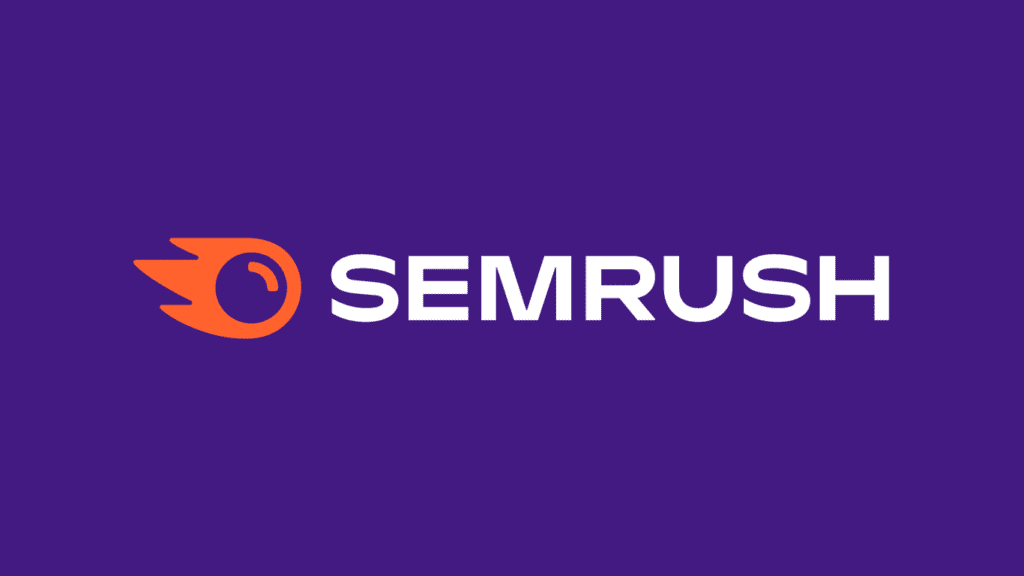
SEMRush is a digital marketing suite that helps you analyze your competitors’ SEO, PPC, and content marketing strategies. It provides insights on keywords, advertising ideas, backlinks, and more. With SEMRush, you can optimize your websites to rank higher on search engines like Google and boost traffic.
Google Keyword Planner

Google Keyword Planner is a free tool provided by Google to help users research and plan their keyword strategies.
It provides detailed information on search volume, competition levels, and suggested bids for keywords.
With this data, users can build effective keyword lists that will help to optimize their website’s visibility in search engine results.
Surfer SEO

Surfer SEO is an AI-powered SEO tool designed to help users optimize their websites.
It uses real-time data from Google to analyze the SERPs and provide insights into how they can improve their SEO strategy.
Surfer SEO provides keyword research, competitor analysis, content optimization, and more – all backed by actionable data that helps users boost their website’s visibility in search engine results.
Frase
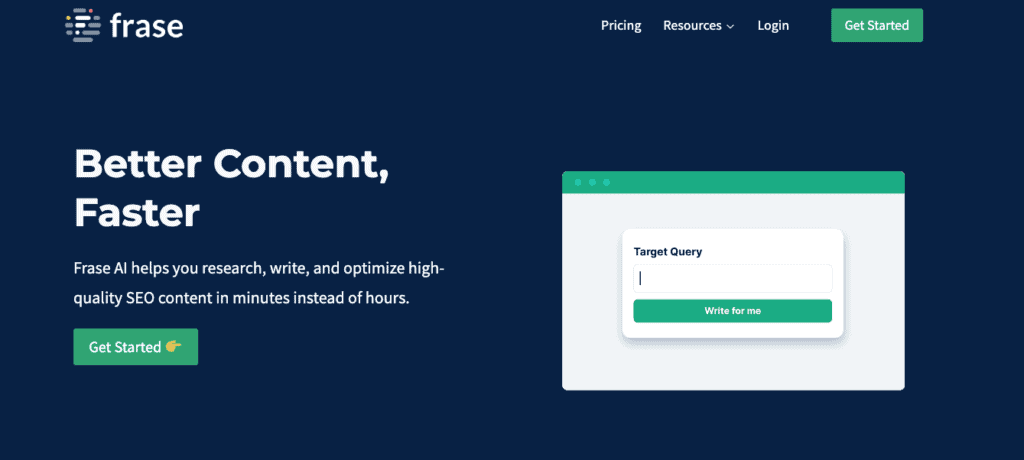
Frase.io is a content optimization and research platform that helps users create SEO-friendly content that drives organic traffic.
It helps identify the topics and keywords users should be targeting in their content, as well as provides suggestions on how to improve existing content.
Frase.io also provides insights into competitors’ websites and the kind of content they are creating, so users can stay ahead of the competition.
Jasper.ai

Jasper.ai is an AI writing assistant that helps you create content faster and more efficiently. It can generate unique, engaging, and accurate content on demand, tailored to your exact needs.
Whether it’s a blog post, website copy, or script for video or audio advertising, Jasper.ai will provide quality content quickly and reliably as well as create a better content creation process that allows your content to be seen by more people.
Grammarly

Grammarly is an AI-based grammar and writing assistant that helps you write with clarity and precision.
It proofreads documents for errors in punctuation, spelling, grammar, word choice, and style.
Grammarly can also help you improve your writing quality by providing tailored feedback on each document.
Yoast SEO
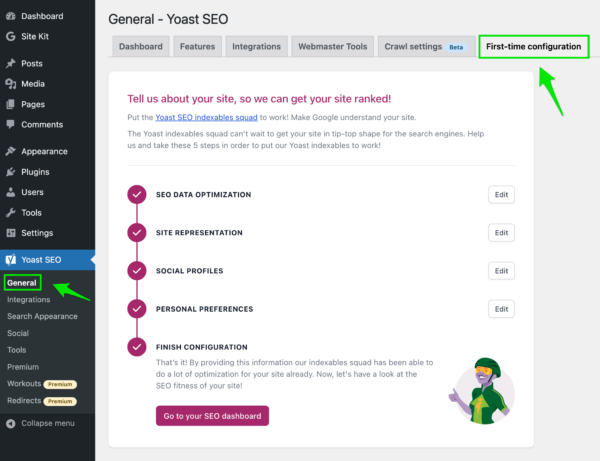
Yoast SEO is an SEO plugin for WordPress that allows you to optimize your website for search engine optimization (SEO).
It helps you write content that meets the requirements of search engines, as well as provides helpful tips and advice on how to write better content.
With Yoast SEO, you can ensure your website is optimized for both Google and other search engines.
Rank Math
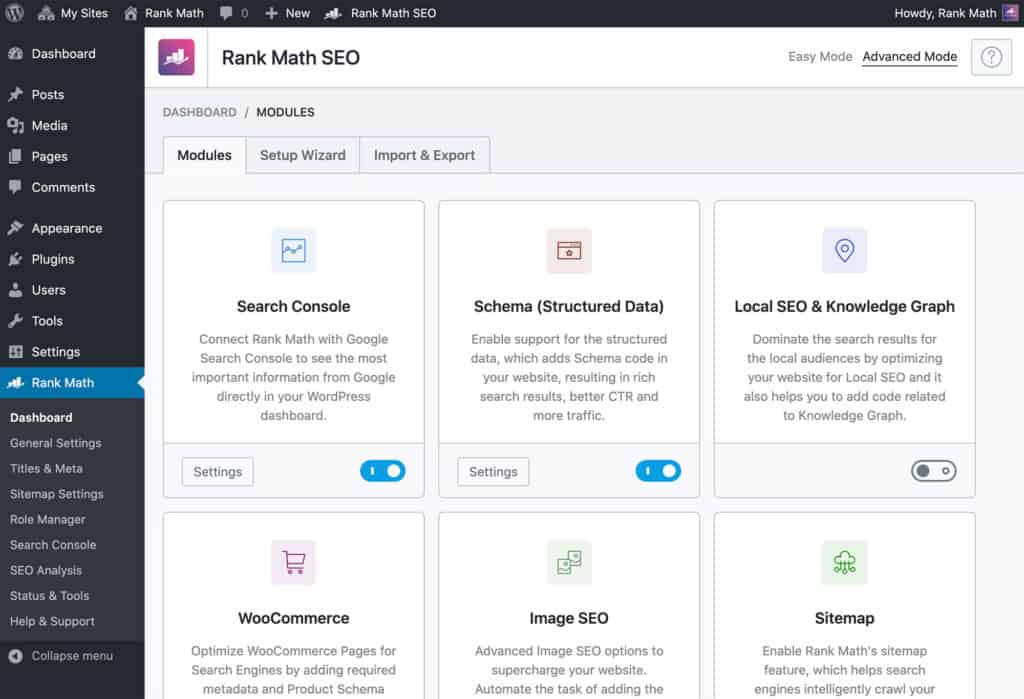
Rank Math is a powerful SEO plugin for WordPress that helps you create content that is optimized for search engine rankings.
Rank Math provides an easy-to-use interface and powerful tools, such as an automated keyword research feature and automatic meta-description creation.
It also offers advanced features, such as online image optimization, redirect manager, and support for various web standards.
Google Search Console
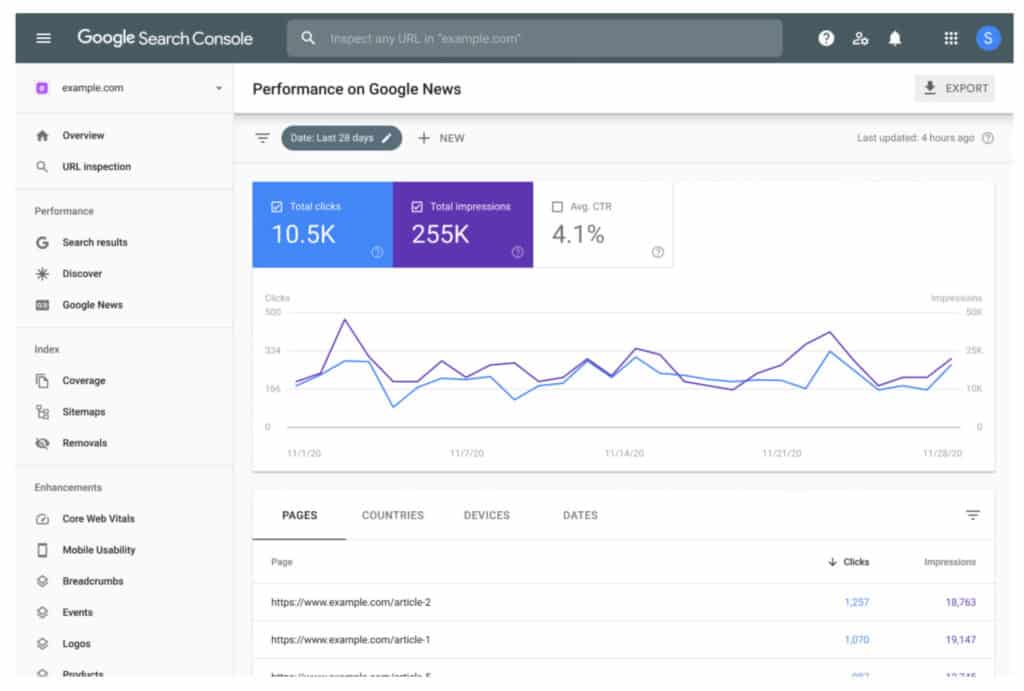
Google Search Console is a free tool that enables webmasters to monitor and manage their website’s presence in Google search results.
It provides detailed performance insights, including an overview of organic keywords and the number of impressions, clicks, and average position the website is getting in Google’s search results.
It also offers tools to help diagnose issues, like crawl errors and indexing problems.
Google Analytics

Google Analytics is a free analytics tool that tracks website and app usage data.
It provides detailed insights into website performance, such as page views, unique visitors, session duration, bounce rate, and conversions.
Google Analytics also offers various advanced features, including segmentation and remarketing capabilities.
Google Trends

Google Trends is a free tool that helps you track the popularity of searches over time.
It works by looking at search terms used in Google and other search engines and provides a graph that shows how the search volume for those terms has changed.
Also, it provides access to related topics, top-ranked websites for any given topic, and geographical information about where the queries originate from.
Conclusion
Content optimization is a critical component of successful SEO and digital marketing efforts.
By following best practices and using the right tools, you can improve the visibility and relevance of your content and reach your target audience more effectively.
Whether you’re a blogger, small business owner, or digital marketer, taking the time to optimize your content can help you to achieve your goals and drive long-term success.

